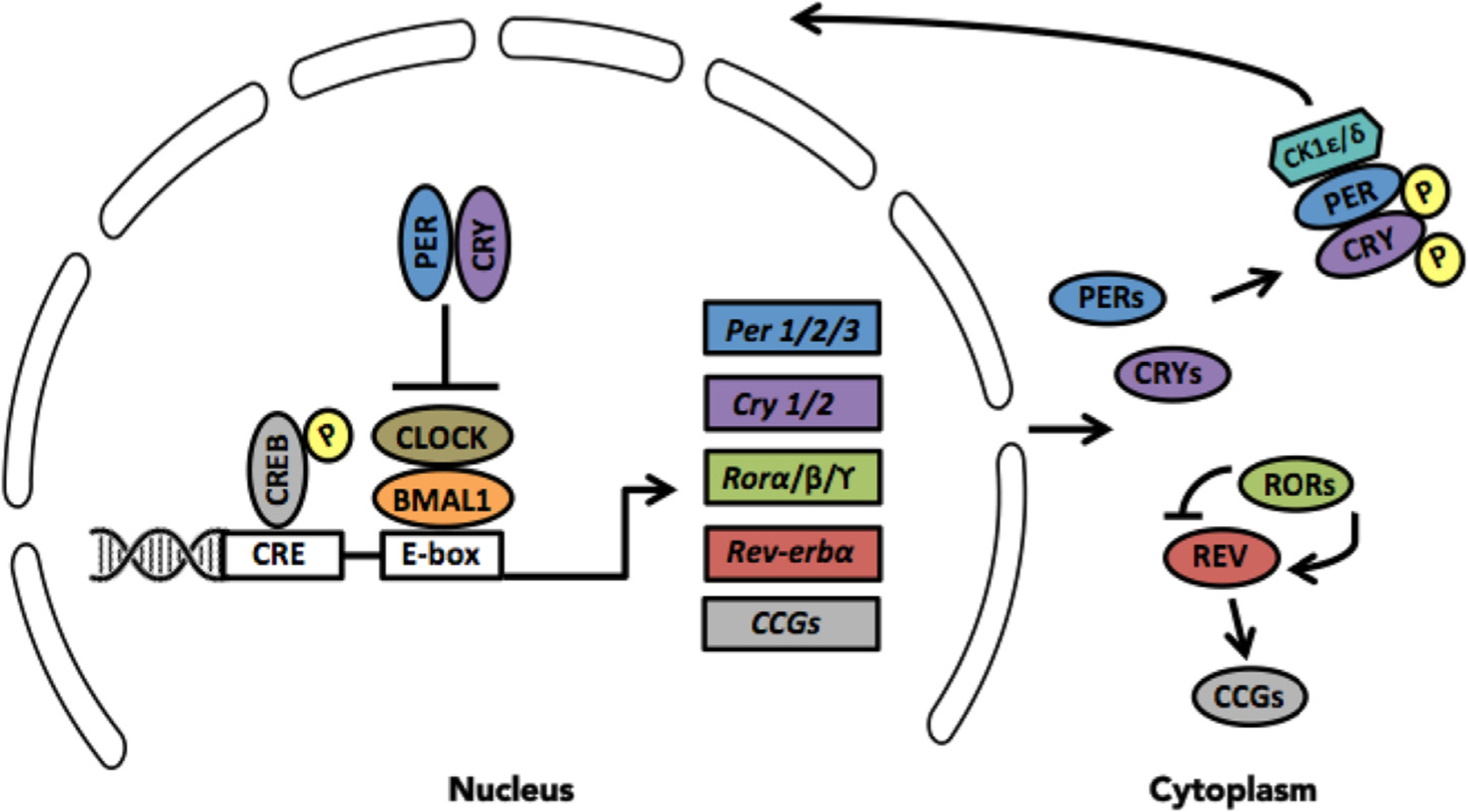Fig. 1.

Molecular machinery of the circadian clock. In mammals, the circadian clock is driven by a primary transcriptional-translational feedback loop, which is composed of a positive arm that acts as the system activator and a negative arm that acts as the system repressor. Brain muscle arnt like protein 1 (BMAL1) and circadian locomotor output cycles kaput (CLOCK) proteins form heterodimers, which bind to the E-box enhancer unit of three period (PER1/2/3) and two cryptochrome (CRY1/2) genes thereby driving their transcription. Over the course of the subjective day, PER and CRY proteins accumulate in the cytoplasm and upon reaching sufficient levels, dimerize and associate with CK1ε/δ, thereby phosphorylating them and allowing translocation back into the nucleus to inhibit BMAL1/CLOCK-mediated transcription. In a similar fashion, BMAL1/CLOCK activates some nuclear orphan receptor genes (e.g. Rorα/Rorβ/Rorϒ or Reverbα), which repress or activate Bmal1 transcription, respectively to form an auxiliary feedback loop that stabilizes the primary loop. BMAL1/CLOCK can also activate a multitude of clock-controlled genes (CCGs).
